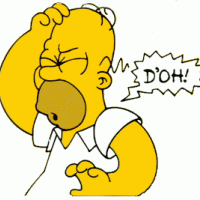
Working on Endgame Mistakes
Any serious chess player after finishing a tournament analyzes his games. (Yes, I am saying: no matter how good you are, if you don't analyze your games, you are not serious!) Through game analysis you can come to important conclusions regarding where your game stands. The analysis also gives you material on what weaknesses to work on.
Openings are rather easy to fix due to databases containing similar positions from the opening that you play. You can just go over the games of strong players in the opening that you played and learn plans and tactical motifs. Then the middlegames are harder to work with because it is not easy to find similar middlegames played by great players and probably you need a coach to pinpoint typical plans. Endgames are probably even harder to improve because it is not clear how to categorize mistakes in the endgames (for example in the middlegame you can use categories of open/closed center, weak squares, open files, attack on the king etc.). Today I would like to give you an idea on how to categorize mistakes in your endgames and then how to eventually eliminate them. As an example I will use my game from the Manhattan Open, which I presented last week.
The first step is to look with detachment at your endgame. You need to objectively see your weak sides in the endgame and the less you try to justify your mistakes with external factors the better it will turn out in the end. I was in time trouble and could dismiss this endgame as a product of time trouble. However, as my opponent pointed out in his video analysis of the game even with one minute on the clock the mistakes that I made are unacceptable. After you leave the emotions behind it is time to scrutinize the game. Outside help is always useful. After you categorized the mistakes it is time to find a set of examples where the given element is dominant. Below I give you an example of the endgame categories I came up with and the examples that I went through in an attempt to get a better feel for each given element.
The first weakness is underestimating the activity of the white king and neglecting the activity of my king. King activity is one of the top elements in endgames when it comes to evaluation. It is not hard to find some examples where king activity decided the game. I went to endgames books and searched for "king activity."
The given example is particularly relevant because as in my game black is up an exchange for a pawn but white’s king is active. At first glance I thought that white is better – his position looks so dominating. White has the f and the g- pawns that are starting to roll and there is only one black rook to stop them. The white knight and the king are ready to support them. I had learned my lesson from the above game and refused to evaluate this position as better for black.
However, Alekhine gave a line that is winning for black, which the computer confirms. What is special about this position that my game lacks is that black has a concrete counterplay, which is hard to spot at once. The two against one pawns on the queenside is a big advantage for black because it is a potential passed pawn. Since the white pawns on the kingside are not too far advanced black can break through on the queenside and create a passed pawn right away. Let us see the game:
It is not easy to figure out the above game because the position is extremely complex. However, we can generalize some concepts based on the variations that we saw. The white king's task is to support the pawns, not to let the black king into the camp, and to stop the b-pawn. Three tasks for one slow king-- it can complete them only by being in a centralized position. The black king has to march to the kingside to stop the pawns. This reminds us of my game as I never realized that bringing the king to stop the white pawns should be my first priority.
The knight will go to block the b-pawn, but for now it can support the pawns too. It seems to me that black managed the pawn break and created counterplay just barely in time. I wanted to know more precisely the value of one tempo in this endgame. How would the evaluation of the position change if white had a pawn not on g4 but on g5 instead? Would black still have winning chances? I set it up with the pawn on g5, and gave it a try! It seems that black would have to play for a draw. Here is the game:
Another question is how important is the black king position. It is somehow important but to what extent will the evaluation of the position change if we place the king on a7 for example? At first I thought that white will have some advantage but nothing decisive. However, it turns out that placing the king on a7 is equivalent to having it on c6 with white pawns already on the 5th file. Here is an example of possible play:
From the above example it is clear that the king position is one of the major factors to consider in the positional evaluation. One can learn a lot from just one example by asking the right questions. Here, I tested how the positional evaluation changes by placing the black king far away or by advancing one of the white pawns. The evaluation of the position was sensitive to both factors. You can learn a lot about any factor in the endgame by taking a position, playing it out; then changing a relevant detail, and playing it out again; making yet another change, and repeating. In the next article we will look at examples associated with advanced pawns, addressing it as a second category that I have to work on, given the game against Shahade.






